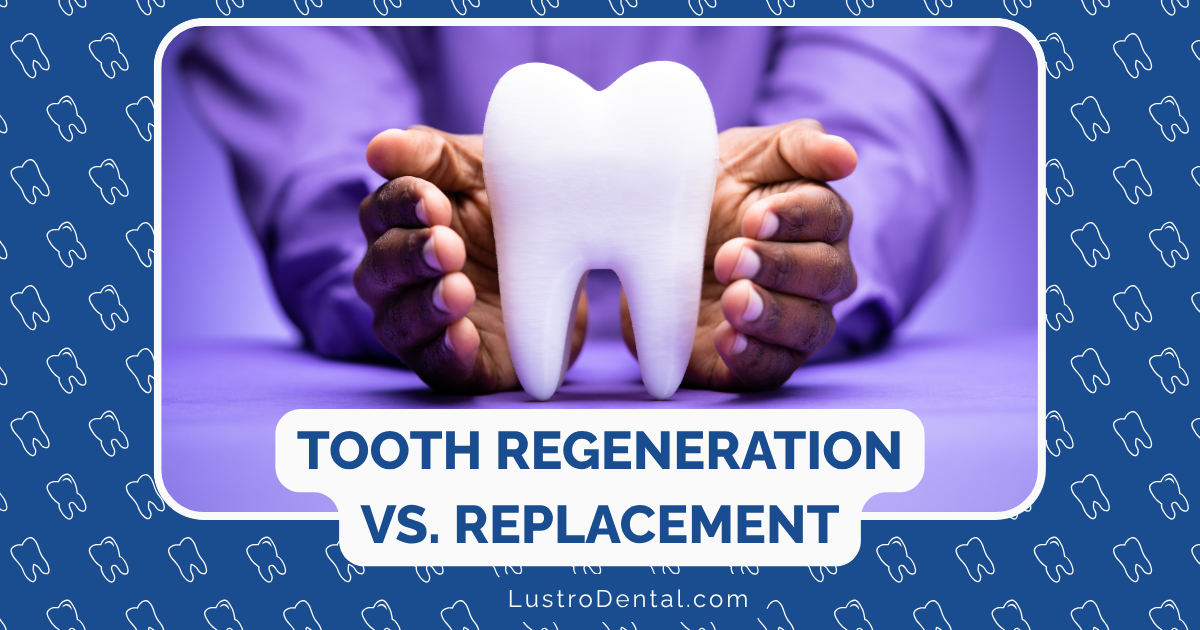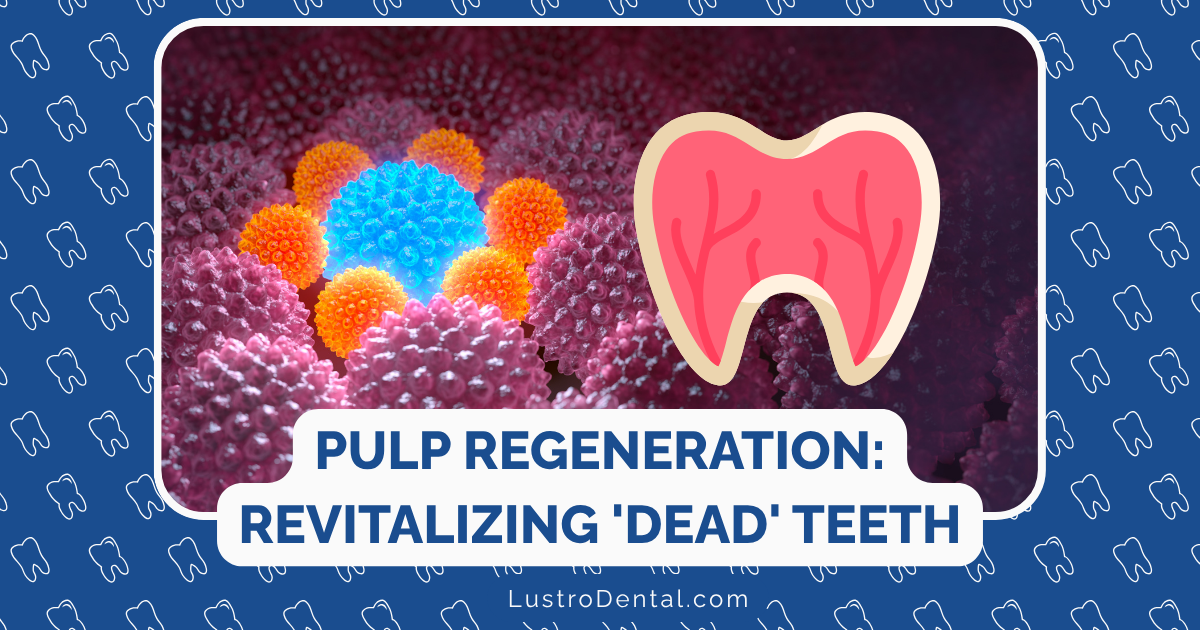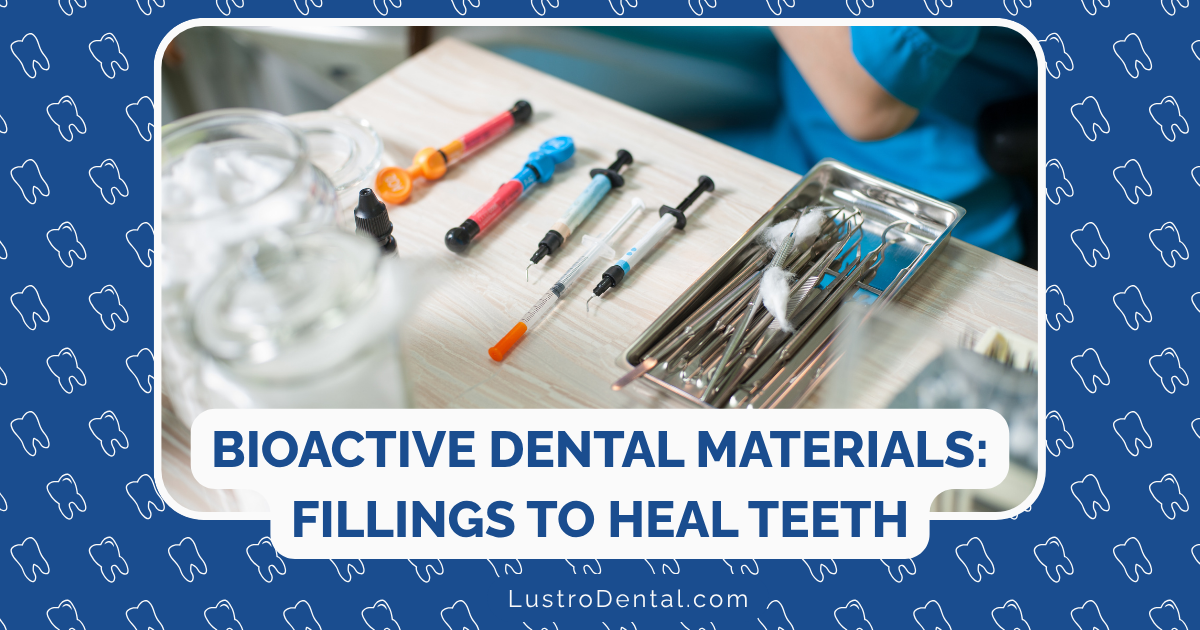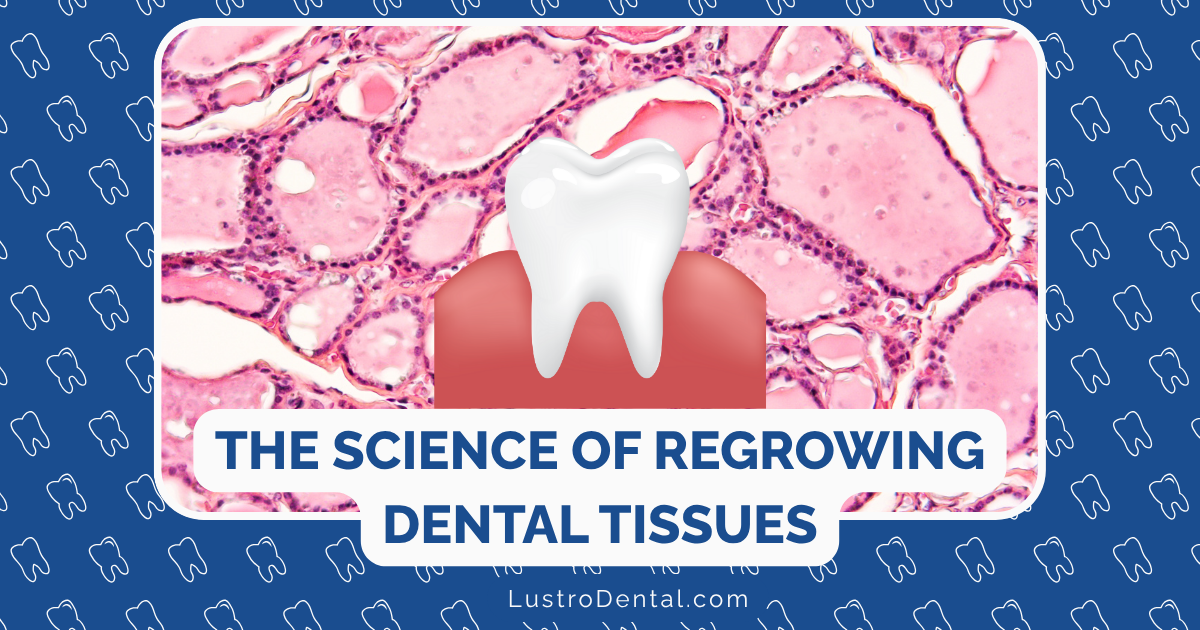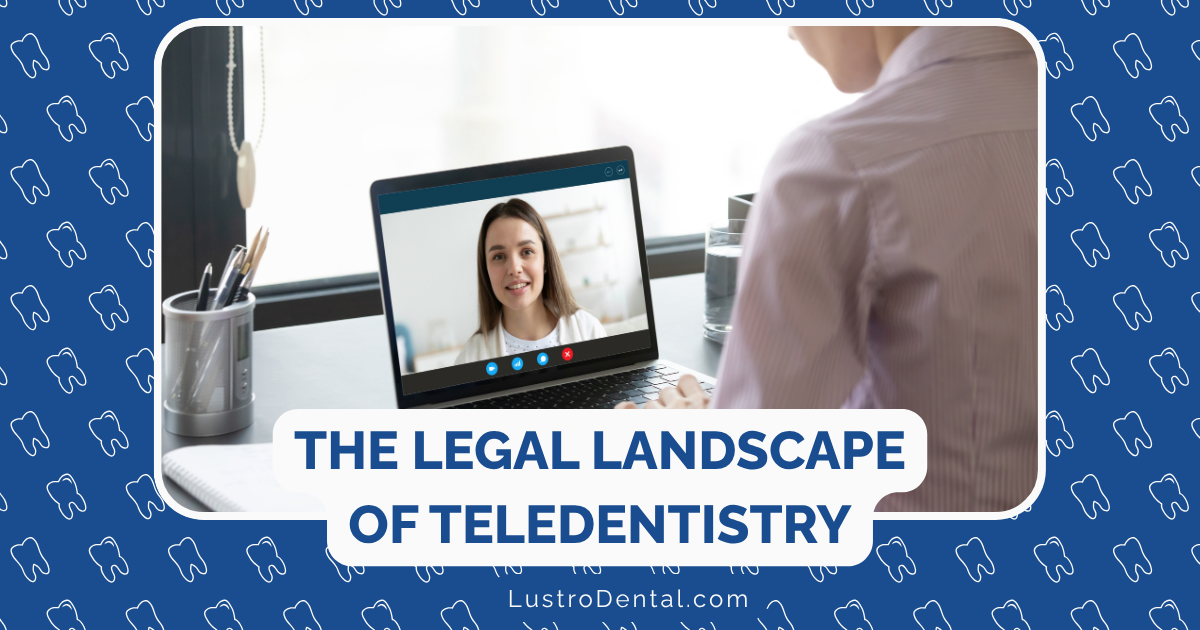Stem Cells in Dentistry: Current Applications and Future Possibilities
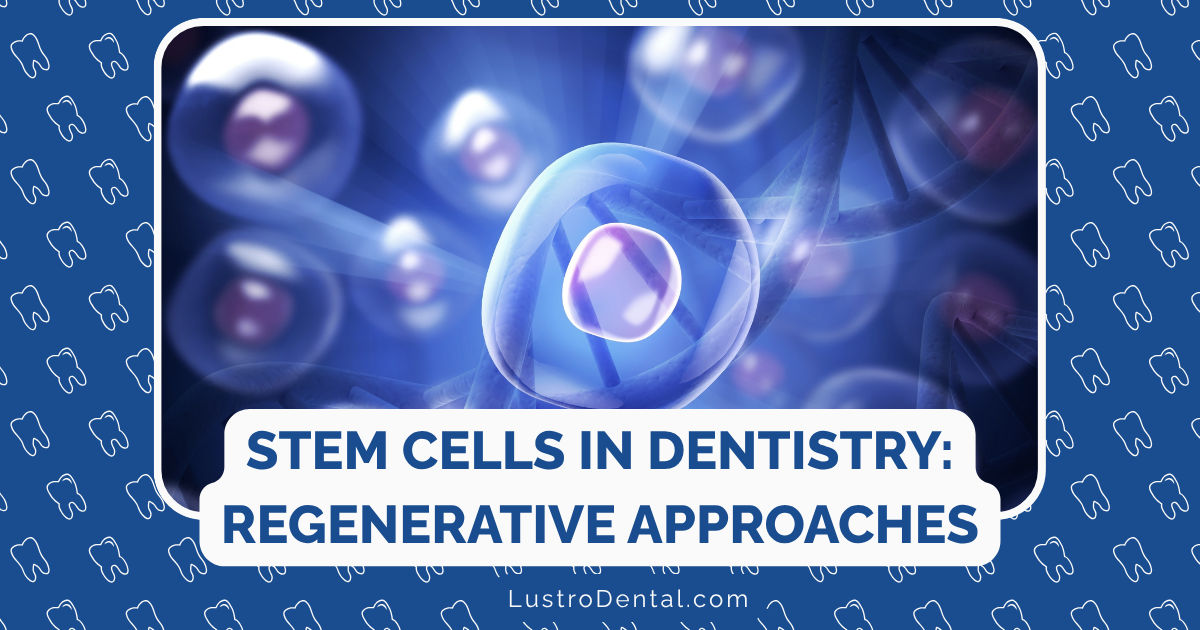
When most people think about advances in dental care, they might imagine new filling materials, improved implant designs, or less invasive surgical techniques. However, one of the most promising frontiers in dentistry involves something far more fundamental: stem cells. These remarkable biological building blocks are transforming our understanding of dental treatment and opening possibilities that seemed like science fiction just a few decades ago.
Since the discovery of dental stem cells in 2000, research has accelerated dramatically, with more than 280 clinical trials now investigating tissue regeneration applications according to ClinicalTrials.gov. This revolution in regenerative dentistry has the potential to fundamentally change how we approach everything from cavity treatment to complete tooth replacement.
Understanding Dental Stem Cells: Nature’s Building Blocks
Before exploring applications, it’s important to understand what makes dental stem cells so valuable.
What Are Stem Cells?
Stem cells are undifferentiated cells with two remarkable abilities:
- Self-renewal: They can divide and create more stem cells.
- Differentiation: They can develop into various specialized cell types.
These properties make stem cells the body’s natural repair system, replacing damaged or dying cells and regenerating tissues throughout life.
Unique Advantages of Dental Stem Cells
While stem cells exist throughout the body, dental sources offer several distinct advantages:
- Accessibility: Dental stem cells can be harvested from teeth that would otherwise be discarded, such as extracted wisdom teeth, exfoliated primary teeth, or teeth removed for orthodontic purposes.
- Minimally Invasive Collection: Obtaining dental stem cells is far less invasive than harvesting bone marrow stem cells, which requires a painful aspiration procedure.
- High Proliferation Rate: According to research published in Springer Link, dental pulp stem cells demonstrate higher proliferation rates compared to bone marrow stem cells.
- Versatility: Dental stem cells can differentiate into various cell types, including dental tissues, bone, nerve cells, and even muscle tissue.
Dr. Sarah Johnson, Director of the Center for Regenerative Dental Medicine, explains: “The mouth is a treasure trove of stem cells. Almost every oral tissue except enamel, dentin, and cementum contains stem cells throughout life. This makes the oral cavity one of the most accessible and rich sources of stem cells in the entire body.”
Sources of Dental Stem Cells
Several distinct populations of stem cells have been identified within the oral cavity:
Dental Pulp Stem Cells (DPSCs)
Located in the soft living tissue inside teeth, dental pulp stem cells were the first dental stem cells discovered. They can differentiate into:
- Odontoblasts (dentin-forming cells)
- Osteoblasts (bone-forming cells)
- Neuronal cells
- Blood vessel cells
DPSCs are typically harvested from extracted permanent teeth, particularly wisdom teeth.
Stem Cells from Human Exfoliated Deciduous Teeth (SHED)
Found in the pulp of baby teeth, SHED cells demonstrate even greater plasticity than DPSCs. Research published in the Journal of the American Dental Association indicates that these cells show particular promise for dentin regeneration and connective tissue engineering.
Periodontal Ligament Stem Cells (PDLSCs)
Residing in the periodontal ligament (the tissue connecting teeth to bone), PDLSCs can differentiate into:
- Cementoblasts (cementum-forming cells)
- Osteoblasts
- Fibroblasts (connective tissue cells)
These cells are particularly valuable for regenerating the complex structures of the periodontium damaged by periodontal disease.
Stem Cells from the Apical Papilla (SCAP)
Found in the developing root tips of immature permanent teeth, SCAP cells show strong potential for root development and pulp regeneration.
Dental Follicle Progenitor Cells (DFPCs)
Derived from the tissue surrounding developing teeth, DFPCs can differentiate into periodontal ligament cells and contribute to alveolar bone formation.
Current Clinical Applications
While many stem cell applications remain in research phases, several are already transitioning to clinical practice:
Regenerative Endodontics: Revitalizing Dead Teeth
Perhaps the most established application is regenerative endodontic procedures for immature permanent teeth with necrotic pulps:
- Traditional Approach: Conventional root canal therapy, which leaves the tooth devitalized and vulnerable to fracture.
- Stem Cell Approach: By stimulating bleeding from the periapical tissues, stem cells are recruited into the canal space where they can regenerate pulp-like tissue and continue root development.
Dr. Michael Chen, an endodontist specializing in regenerative procedures, notes: “We’re seeing remarkable success with regenerative endodontic procedures in young patients. Teeth that would have previously been compromised for life are now continuing to develop and maintain vitality. This is particularly important for immature permanent teeth with open apices.”
A study published in Science Direct reports that transplanting dental pulp stem cells into disinfected necrotic teeth has shown promising results in recovering tooth vitality and promoting continued root growth in immature teeth.
Periodontal Regeneration: Rebuilding Supporting Structures
Periodontal disease destroys the supporting structures around teeth, including bone, cementum, and periodontal ligament. Stem cell therapies are showing promise in regenerating these complex tissues:
- Current Approach: Traditional periodontal surgery can remove disease and attempt to stimulate some regeneration, but results are often limited and unpredictable.
- Stem Cell Approach: PDLSCs combined with appropriate scaffolds and growth factors can regenerate functional periodontal attachment, including new bone, cementum, and organized periodontal ligament fibers.
Clinical trials have demonstrated that stem cell-based approaches can achieve significantly better results than conventional treatments for deep intrabony defects and furcation involvements.
Bone Regeneration for Implant Placement
Dental implants require adequate bone volume for successful placement. Stem cells are enhancing bone regeneration procedures:
- Traditional Approach: Bone grafting using autogenous bone, allografts, xenografts, or synthetic materials.
- Stem Cell Approach: Enriching bone graft materials with stem cells dramatically improves the quality and quantity of regenerated bone, creating a more suitable foundation for implant placement.
According to research from Genesis Publication, stem cells significantly improve bone regeneration at implant sites, enhancing the success rates of implant surgeries, particularly in challenging cases with limited bone volume.
Biobanking: Preserving Future Options
While not a treatment itself, stem cell banking services now offer patients the opportunity to cryopreserve dental stem cells for potential future use:
- Cells are typically harvested from extracted wisdom teeth, exfoliating primary teeth, or teeth removed for orthodontic purposes.
- After processing and testing for viability, the cells are cryopreserved in specialized facilities.
- These preserved cells may be used for future regenerative therapies as new treatments become available.
Dr. Lisa Rodriguez, a pediatric dentist who discusses stem cell banking with parents, explains: “Banking dental stem cells, particularly from children’s teeth, is essentially a form of biological insurance. While we can’t predict exactly which treatments will be available in the future, preserving these cells keeps options open as regenerative therapies continue to advance.”
Emerging Applications and Future Possibilities
Beyond current clinical applications, research is advancing rapidly in several exciting directions:
Whole Tooth Regeneration: The Ultimate Goal
Perhaps the most ambitious goal in dental stem cell research is the regeneration of entire teeth:
- Bioengineered Tooth Buds: Researchers are developing methods to create tooth buds using stem cells that, when implanted into the jaw, can develop into functional teeth with all natural components.
- Scaffold-Based Approaches: 3D-printed scaffolds seeded with different dental stem cell populations are being developed to guide the formation of complex tooth structures.
While complete tooth regeneration remains primarily in the laboratory phase, animal studies have demonstrated proof of concept. According to research cited by Genesis Publications, stem cells have shown potential for growing entire teeth in vitro, which could revolutionize treatment for tooth loss in the coming years.
Pulp Regeneration in Mature Teeth
Extending regenerative endodontic procedures to fully developed teeth with necrotic pulps:
- Current Limitation: Regenerative procedures are primarily used for immature teeth with open apices that allow stem cell recruitment.
- Future Direction: Research is focused on delivering dental pulp stem cells, scaffolds, and growth factors through the narrow apical foramen of mature teeth to regenerate functional pulp tissue.
Clinical trials are currently evaluating the safety and efficacy of pulp regeneration in mature teeth, with promising preliminary results showing restoration of vitality and immune defense functions.
Salivary Gland Regeneration
For patients suffering from xerostomia (dry mouth) due to radiation therapy, Sjögren’s syndrome, or medication side effects:
- Salivary gland stem cells can potentially regenerate damaged glands or create bioengineered replacement glands.
- Early clinical trials are investigating stem cell-based approaches to restore salivary function in patients with radiation-induced xerostomia.
TMJ Regeneration
For patients with temporomandibular joint disorders involving cartilage damage:
- Dental stem cells can differentiate into chondrocytes (cartilage cells) to repair damaged TMJ components.
- Bioengineered TMJ discs using dental stem cells on appropriate scaffolds show promise for replacing damaged discs.
Neural Regeneration
For patients with trigeminal nerve injuries or neuropathic pain:
- Dental pulp stem cells have demonstrated remarkable neurogenic potential.
- Research from PMC indicates that dental stem cells exhibit neuroprotective effects, making them promising candidates for treating various nervous system disorders, including nerve injuries in the oral and maxillofacial region.
The Intersection of Stem Cells with Other Technologies
The true potential of dental stem cells is being amplified through integration with other cutting-edge technologies:
3D Bioprinting
The combination of stem cells with 3D printing technology is creating unprecedented possibilities:
- Precision Placement: 3D bioprinters can precisely position different stem cell types along with supporting materials to create complex tissue structures.
- Custom Scaffolds: As noted in JADA, unique scaffolds made of natural materials, hydrogels, and resorbable nanocomposites can be 3D printed to specific shapes and sizes, perfectly matching a patient’s anatomy.
- Vascularization: One of the biggest challenges in tissue engineering, creating adequate blood supply, is being addressed through bioprinting techniques that incorporate vascular channels.
Artificial Intelligence and Digital Dentistry
AI is accelerating stem cell research and applications:
- Treatment Planning: AI algorithms can analyze patient-specific factors to optimize stem cell-based regenerative approaches.
- Outcome Prediction: Machine learning models can predict the likely success of stem cell therapies based on patient characteristics and treatment parameters.
- Monitoring: AI-enhanced imaging can track the progress of tissue regeneration with unprecedented detail.
Gene Editing
CRISPR and other gene-editing technologies are enhancing stem cell therapies:
- Enhanced Properties: Stem cells can be genetically modified to improve their regenerative capabilities, survival rates, or differentiation potential.
- Disease Correction: For genetic dental conditions, gene-edited stem cells could potentially correct underlying genetic defects before tissue regeneration.
Challenges and Considerations
Despite tremendous promise, several challenges must be addressed before stem cell therapies become mainstream in dentistry:
Technical Challenges
- Standardization: Protocols for isolation, expansion, and application of dental stem cells need further standardization.
- Vascularization: Ensuring adequate blood supply to regenerated tissues remains a significant challenge.
- Integration: Newly regenerated tissues must properly integrate with existing structures to restore function.
Regulatory and Practical Considerations
- FDA Approval: Navigating the regulatory pathway for stem cell therapies is complex and time-consuming.
- Cost Factors: Current stem cell therapies are expensive, limiting accessibility.
- Training Requirements: Dental professionals will need specialized training to implement these advanced techniques.
Ethical Considerations
- Commercialization Concerns: As noted in Springer Link, the rapid commercialization of regenerative therapies has raised ethical concerns, necessitating comprehensive guidelines and standards.
- Equitable Access: Ensuring these advanced treatments are available to all patients, not just those with significant financial resources.
- Informed Consent: Patients must fully understand the experimental nature of many stem cell therapies.
Dr. Robert Thompson, a bioethicist specializing in regenerative medicine, emphasizes: “As with any revolutionary technology, we must balance innovation with responsible implementation. Previous negative outcomes from premature stem cell therapies highlight the need for rigorous safety protocols and evidence-based approaches.”
Practical Implications for Patients
For dental patients considering or interested in stem cell therapies, several practical points are worth noting:
Current Availability
- Regenerative Endodontics: Already available in many endodontic practices for immature permanent teeth with pulp necrosis.
- Stem Cell Banking: Commercial services are available for preserving dental stem cells from extracted teeth.
- Advanced Bone Grafting: Some specialists offer stem cell-enhanced bone grafting procedures.
- Clinical Trials: Patients with specific conditions may be eligible for ongoing clinical trials investigating stem cell therapies.
Questions to Ask Your Dentist
If you’re interested in stem cell therapies, consider asking:
- Are any stem cell-based treatments appropriate for my condition?
- What evidence supports the effectiveness of this approach?
- What are the alternatives to stem cell therapy for my situation?
- Is stem cell banking recommended for my extracted teeth or my child’s teeth?
- Are there clinical trials I might qualify for?
Future Outlook for Patients
While many applications remain in development, patients can reasonably expect:
- More widespread availability of regenerative endodontic procedures
- Improved outcomes for periodontal regeneration within 5-10 years
- Potentially commercially available pulp regeneration for mature teeth within the next decade
- Continued expansion of stem cell banking options
Conclusion: A New Era in Dentistry
Stem cell research represents one of the most promising frontiers in dentistry, with the potential to fundamentally transform how we approach tissue damage and tooth loss. Moving from replacement to regeneration changes not just technical procedures but the entire philosophy of dental treatment.
As Dr. Emily Martinez, a researcher in regenerative dentistry, puts it: “We’re at the beginning of a paradigm shift from replacing damaged dental tissues with artificial materials to regenerating natural, functional tissues. This approach preserves more of the natural tooth structure and function, which is always preferable to even the best artificial replacements.”
For patients, the evolution of stem cell therapies offers hope for more biological, functional, and long-lasting solutions to dental problems. While many applications remain in development, the foundation has been laid for a future where lost or damaged dental tissues can be regenerated rather than simply replaced.
As research continues to advance and clinical applications expand, stem cells will likely become an increasingly important part of the dental care landscape, offering patients new options for preserving and restoring their oral health.
Have you had experience with any regenerative dental procedures? Are you considering stem cell banking for extracted teeth? Share your thoughts or questions in the comments below!


